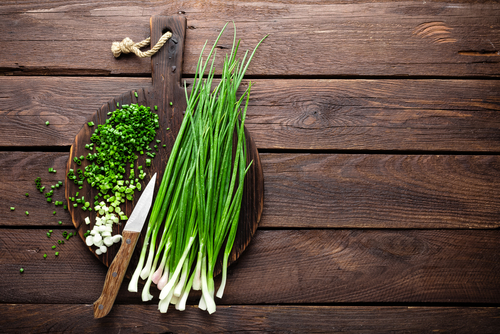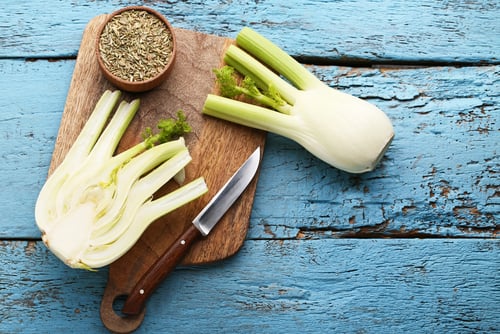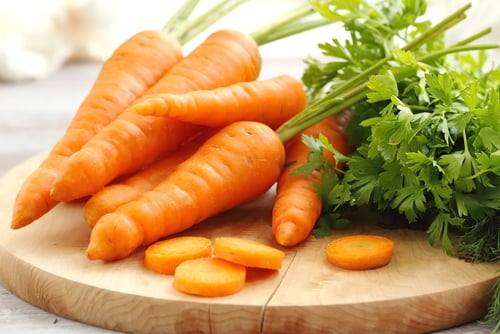By: Elisheva Blumberg, Lubicom Staff
After months of icy winter, there’s nothing like fresh flower buds and green grass shoots for getting your mojo back!
Celebrate nature’s renewal by swapping those winter sweet potatoes and squashes for spring’s fresh-picked specialties.
These 7 spring-peaking vegetables will animate your plate with tons of flavor, nutrients, and seasonally beautiful bounty.
- Scallions

The mild-tasting member of the allium family is so much associated with the season that it’s also known by the name spring onion. Looking just like mini-me versions of leeks, scallions are tasty, versatile, and offer a slew of health benefits. One of the richest natural sources of Vitamin K, scallions also contain lots of vitamins A and B, plus a bunch of essential minerals.
How to add scallions to your plate: Asian-inspired cuisines like stir-fries and miso soup, as a garnish for salads, in omelets, or in these delicious Salmon Burgers by Beth Warren.
- Peas
Whether snow peas, snap peas, or garden peas (also known as sweet peas or English peas) these cute little legumes are a quintessential spring food. Peas boast heart-healthy minerals such as magnesium, potassium, and calcium, plus 4 times the amount of protein as carrots. The only downside: many varieties of peas have a short growing season… so be sure to crack open some of this green goodness while you still can!
How to add peas to your plate: Toss them into a salad or a soup (like this Instant Pot Turkey Stew by Tamar Teitelbaum), or pop open a pod and enjoy them as a snack.
- Fennel

This celery-like cool weather crop has a unique black licorice flavor and a fantastic crunch. Whether prepared raw or cooked, take advantage of this flavorful bulb for its great taste as well as its multiple health benefits. The many nutrients in fennel have been linked to health boons such as lowered blood pressure, increased immunity, and iron absorption.
How to add fennel to your plate: Add raw fennel to salads (it pairs great with cucumbers, pickles, or bell peppers), sauté it for a delicious addition to pasta, or try roasting it for a milder flavor, like in this recipe for One Pan Citrus and Beet Roasted Chicken Thighs by Rorie Weisberg.
- Carrots

Did you know that until the 1600s carrots were exclusively grown in hues of purple, yellow, and white?
Whether you use the typical orange carrot, or go for the now-rare bold heirloom colors, these root veggies are at their most delicious peak come springtime. Ultra-rich in beta carotene (which our bodies convert into vitamin A), carrots can help cultivate a healthy immune system and good eye health.
How to add carrots to your plate: Grate carrots into a Crispy Crunchy Root Salad (from the Dining In cookbook), blend them into a creamy soup, throw them into your juicer, or if you find especially wide carrots, try spiralizing them for a beautiful salad.
- Radishes
I have a soft spot for these hard root vegetables: my grandmother always served them sliced alongside her Friday night chicken soup. Their peppery flavor makes them a perfect complement to a rich soup.
And how ‘bout that gorgeous color? Radishes get their vibrant red hue from pigments called anthocyanins, which proffer antioxidant effects that can treat high blood pressure, colds, and urinary tract infections.
How to add radishes to your plate: Slice them for a raw salad like Grandmother Ida’s Russian Potato Salad (by Raghavan Iyer), roast them, or try making your own homemade radish salsa — they’ll lend an unexpected kick to a traditional salsa.
- Vidalia Onions
A Vidalia onion isn’t just another word for a sweet onion — it’s actually a brand name! Historically grown in the town of Vidalia, Georgia (and now produced only in specifically outlined areas of the state) these characteristically sweet onions develop their distinctive flavor since they’re grown in soil with especially low sulfur.
Like other onion varieties, Vidalias contain fiber, folic acid, and high levels of antioxidants.
How to add Vidalia onions to your plate: The special flavor of these sweet onions shine in cooked dishes like onions soups and quiches. They’re also great raw — use them in salads, dips, and dressings (like this Side of Salmon with Onion-Dill Dressing by Elky Friedman), and sliced on top of hamburgers as a less-sharp alternative to a regular onion.
- Rhubarb
When I think of rhubarb, I can’t help but think of pie. Due to its sour flavor, rhubarb is used in sweetened dishes, such as fruit crisps, jams, and of course, pies.
Though these stunning rosy-red stalks (don’t eat the leaves — they’re poisonous!) have a short growing season, they have a long list of health benefits: rhubarb is high in fiber, Vitamins C and K, manganese, and iron, plus it contains the pigment parietin which is thought to help prevent cancer.
How to add rhubarb to your plate: Rhubarbs lend a gorgeous color to ice cream, baked goods, fruit stews, and crisps. For a twist on the typical cran-apple crisp, change it up with this Mixed Berry Apple Bake by Rivky Kleiman.





